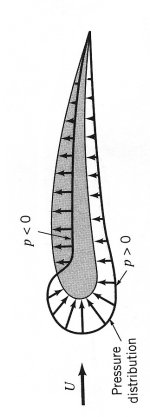Simulation conditions same as above.
Additional variables that are relevant to the trajectory are:
Sight height = 1.5 inches
Total bore angle = 36 MOA (~33 MOA above a 100 yard zero)
Target range = 1000 yards
The values above were held constant.
-------------------------------------------------------------
The first shot was modeled with
no wind, as a baseline. The shot impacts 1000 yards:
+4.51" high, and 9.64" right of the x-axis (LOS)
The 9.64" is the spin drift, the +4.51" is just because 36 MOA elevation isn't
exactly a perfect zero.
-------------------------------------------------------------
Now,
with a 10 mph, 9 o'clock crosswind, the point of impact is:
-0.12" low, and 116.53" right
So the vertical effect of the crosswind is to deflect the bullet down 4.51" + 0.12" = 4.62".
The horizontal effect of the crosswind is: 116.53" - 9.64" = 106.89"
-------------------------------------------------------------
With the 10 mph wind coming straight out of the ground, the point of impact is:
+111.89" high, and 14.23" right
So the vertical effect of the up-wind is 111.89" - 4.51" =
107.38" (compared to 106.89" for the horizontal effect of the crosswind)
The horizontal effect of the up-wind is 14.23" - 9.64" =
4.59" (compared to 4.62" for the vertical effect of the crosswind).
-------------------------------------------------------------
Here is a plot of the 3 bullet impacts at 1000 yards on an x-y grid:
Analysis:
The up-wind deflects the bullet up in the same way a crosswind deflects a bullet to the side. Gravity is still present, and still acts on the bullet the same as it does in a no wind scenario.
As for a bullet getting 'lift' from it's nose pointing above the flight path in a no-wind scenario.... no. The nose doesn't point above the velocity vector, it points to the right. The 'lift' is to the side, not in the vertical plane.
(This last comment isn't illustrated by the simulation in any way. I'm just addressing it because I thought it was commented on, or then again, I may have misunderstood the statement that was made about lift.)
-Bryan






